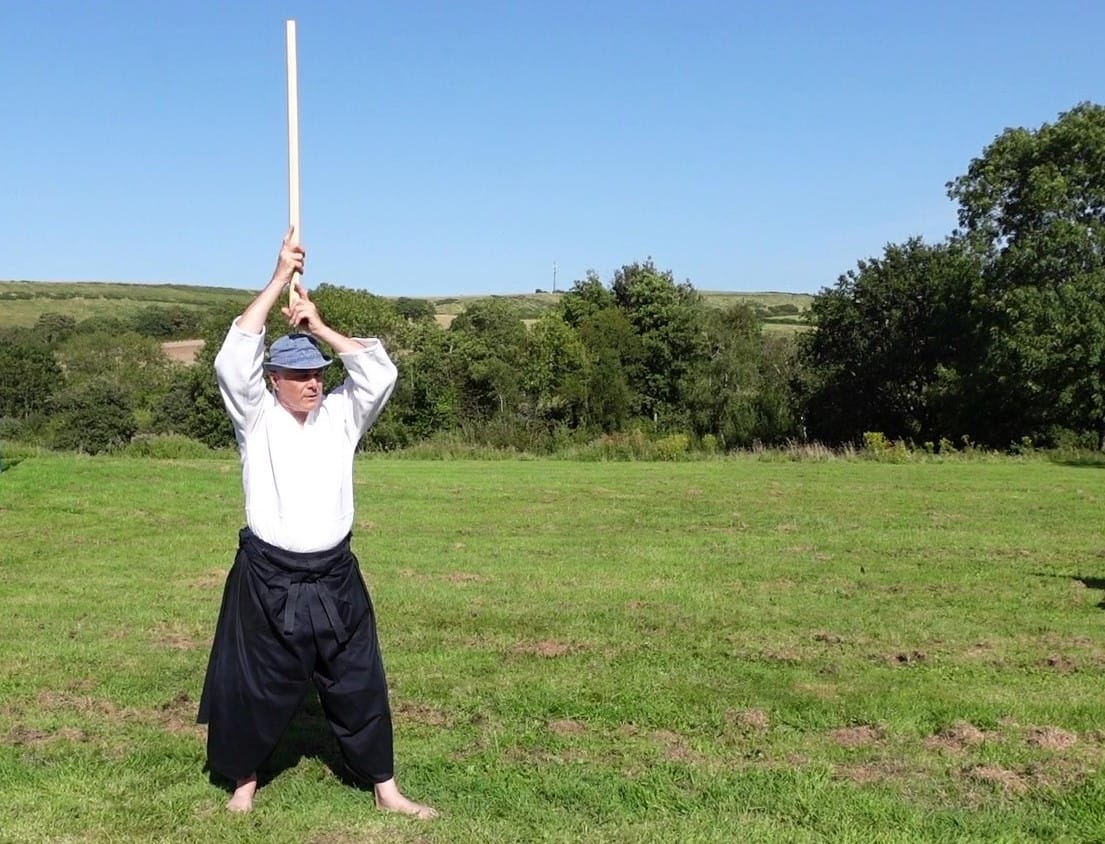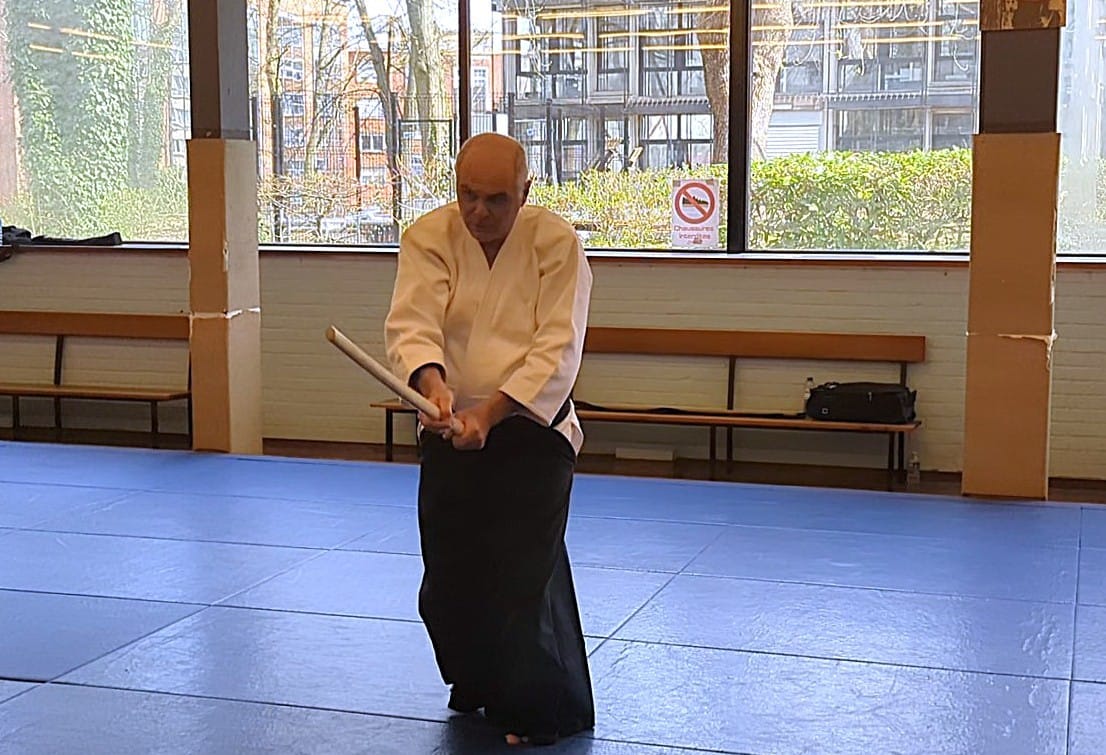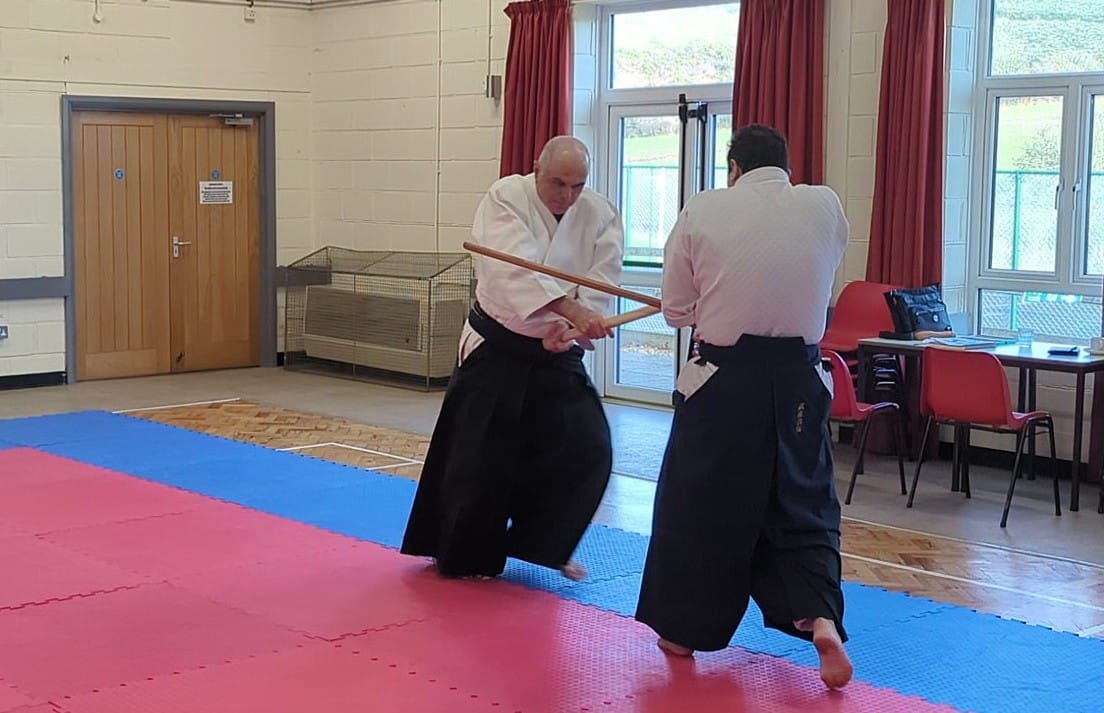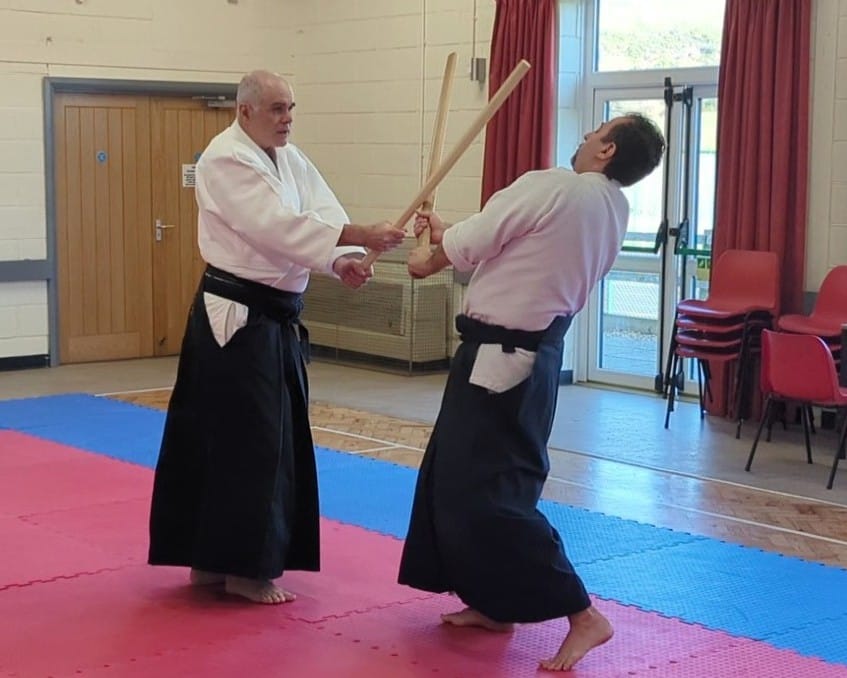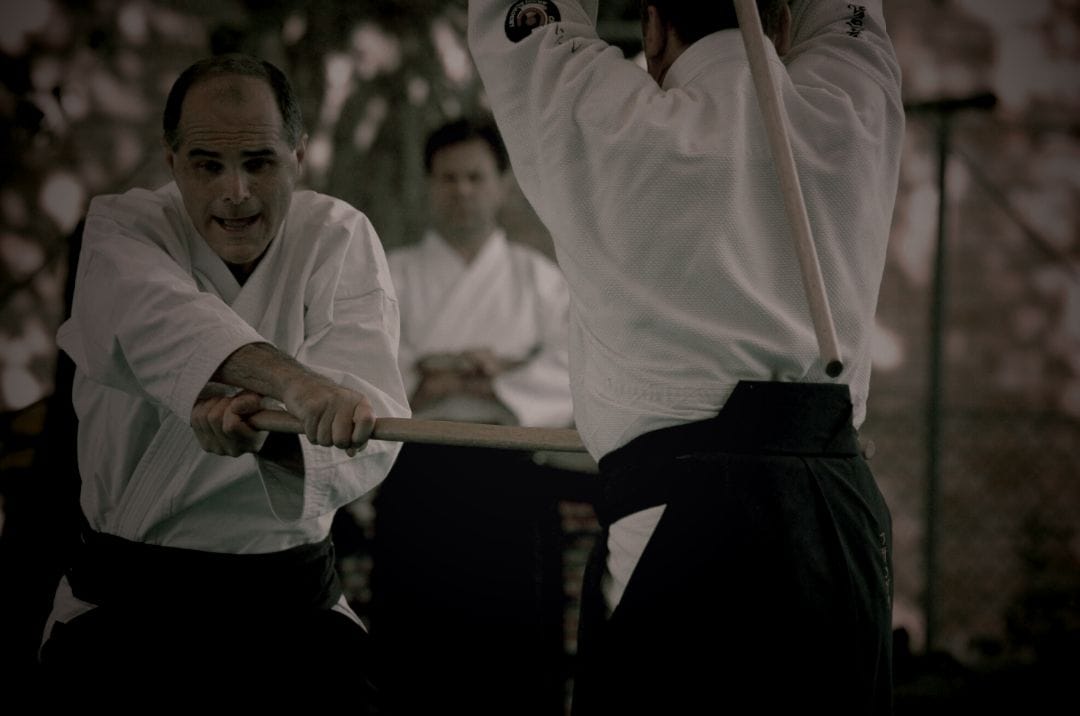The third suburi of the aiki-ken asks the student to first adopt the chudan no kamae guard, then to change his position from there to the waki no kamae guard, and finally to strike shomen uchi from this last guard.
Note that this change is equivalent to moving from a right hanmi (migi hanmi) to a left hanmi (hidari hanmi). Care must be taken with the hanmi in this waki no kamae guard, as it is common to transform it into a ‘profile’ guard, feet parallel, which is no longer Aikido. Insofar as waki no kamae respects the hanmi position in the same way as chudan no kamae does, it is safe to say that it is an Aikido position, which is why it is included in Master Saito's teaching method. The video shows how this exercise is performed:
However, it doesn't seem that O'Sensei used this stance very much, which is a great classic of the Japanese sword schools. And I'd like to take this opportunity to point out that the photo below of a training session in Iwama with Morihiro Saito has nothing to do with waki no kamae. It is a rising cut, probably initiated from the chudan no kamae position, and after turning the blade upwards and opening the body to the left side, one of O Sensei's favourite techniques:
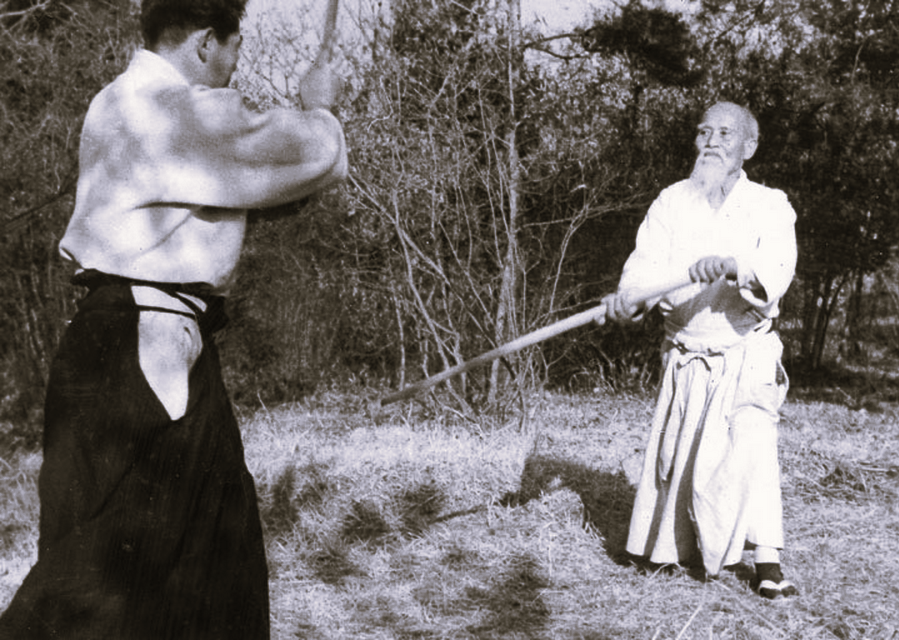
In the transition from chudan no kamae to waki no kamae, the sword is for a moment above the head, in perfect vertical alignment with the spine, like an antenna, a symbol of the union of Heaven and Earth through man and through his sword, the famous bridge of Heaven:
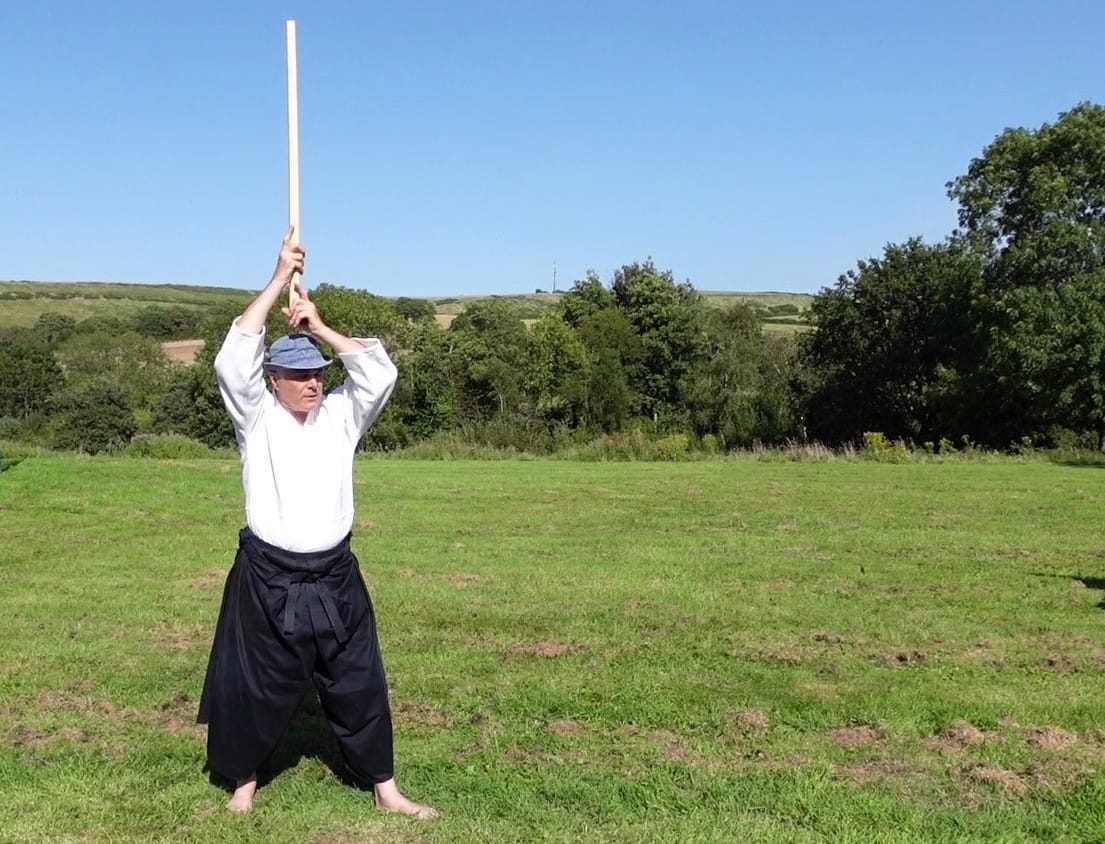
This third suburi of aiki-ken is also an excellent breathing exercise. The inhale takes place during the arming phase of the sword up to the waki no kamae position, the exhale during the shomen strike, which is transformed into kiai in the final phase.

